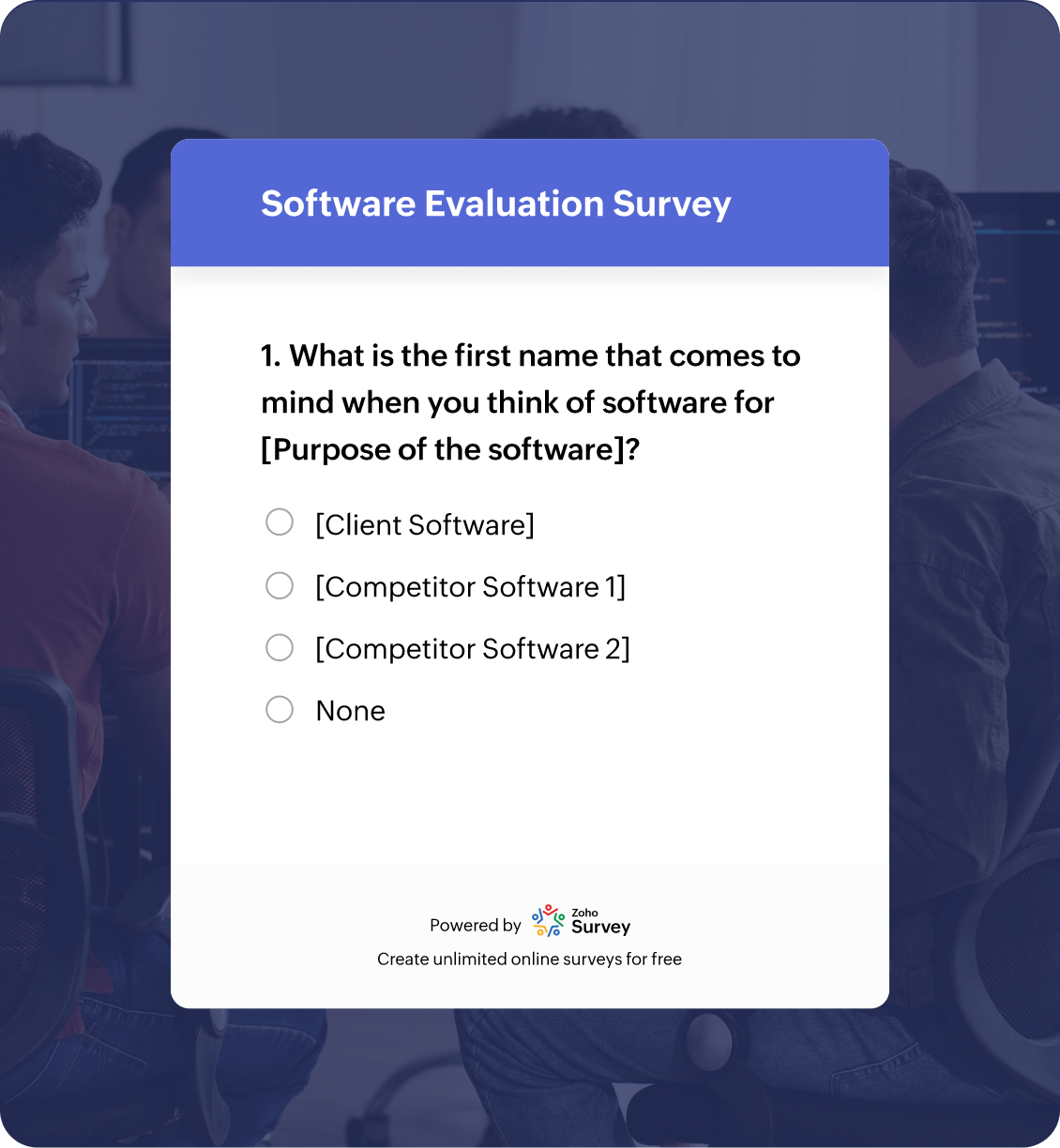Software Evaluation Survey
Is your software what the market needs? How user-friendly is it? Does it need an update or redesign? Answer your most pressing questions by gathering insightful feedback from users about your products and services with software evaluation surveys. Discover how your solutions align with demand in the market, identify opportunities for development, and enhance your software products by making informed decisions with our expert-designed software evaluation survey template.
Try this templateSoftware Evaluation Survey
11
3200+
1min
Why you need software evaluation surveys?
UX-centric insights
Gain insights that help you understand user experiences and preferences, identify and address pain points, and satisfy your customers’ needs more effectively.
Informed decisions
Conduct both quantitative and qualitative research to support meaningful data-driven decisions and guide the software development process. Leverage user feedback to understand whether you should prioritise developing an attractive new feature or focus on fixing bugs and optimising existing functionality.
Guided enhancements
Refine your software’s capabilities and interface by collecting quality feedback and analysing it to make continuous developments to your software based on real user needs.
Market knowledge
Study diverse user perspectives to understand what sets your products apart from competitors and identify your best customer segments. Use this knowledge to differentiate your software and achieve a competitive edge in the market.
Best practices for creating effective surveys
Building a software evaluation survey can be tricky. You often need to cover multiple aspects of the user experience to understand your audience’s needs. Zoho Survey offers an extensive range of templates with questions carefully crafted by experts to help you get started. But our tools also make it easy to create custom surveys from scratch. Here are a few tips to keep in mind.
1. Set objectives
Have realistic goals for your surveys. Strategically focus on specific aspects of your software that need evaluation. What are the target areas you want to work on? What questions need to be answered? Which aspects of the user experience are you hoping to understand and improve?
2. Conduct a pilot test
The key to a successful survey is to always test it before launching it to a wide audience. Gather a carefully picked pilot group and conduct a test survey to identify and fix any issues regarding the clarity of your questions or the flow of your survey.
3. Keep it simple
Minimize dropout rates by designing concise surveys that retain the attention of your respondents and produce credible, complete responses. Simplicity also helps avoid leading questions that may skew the results.
4. Segment your audience
Gather useful insights from multiple user groups that are relevant to your software evaluation and break down the survey results to understand the context of users’ feedback. Using collectors within Zoho Survey, you can easily segment your audience and analyze results accordingly.
5. Refine and follow up
Keep improving your survey based on how your respondents interact with it. Continuously refine your questions based on the feedback you receive to increase accuracy and get more targeted input. It also helps to conduct surveys at regular intervals so you can track changes in user sentiment over time and identify emerging trends.
6. Benchmark and integrate your data
Analyze relevant industry benchmarks to understand how your results compare against your competitors. Combining your survey data with other sources of information, like customer support interactions, feedback on product demos, test results, and reviews, can also help provide deeper insights into user’s experiences and perspectives.
7. Close the loop
Regular surveys will not have a lasting impact if the feedback loop is left open. Build trust with your users by listening and responding to user feedback, acknowledging critical reviews, and creating an actionable plan to improve your product and elevate the user experience.


